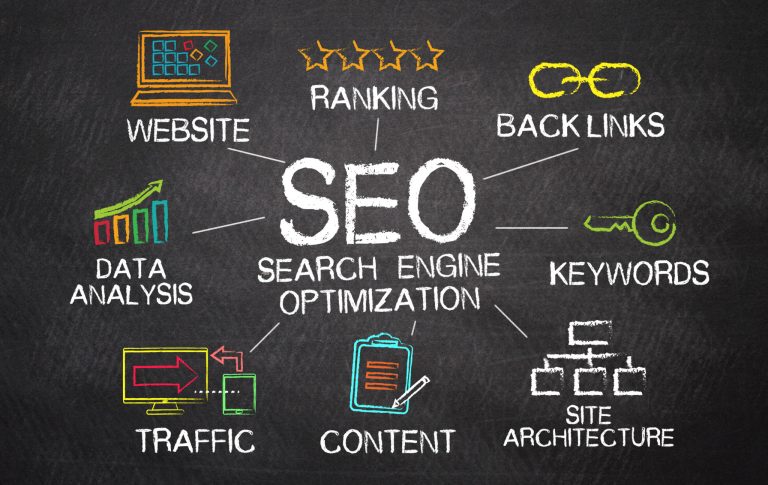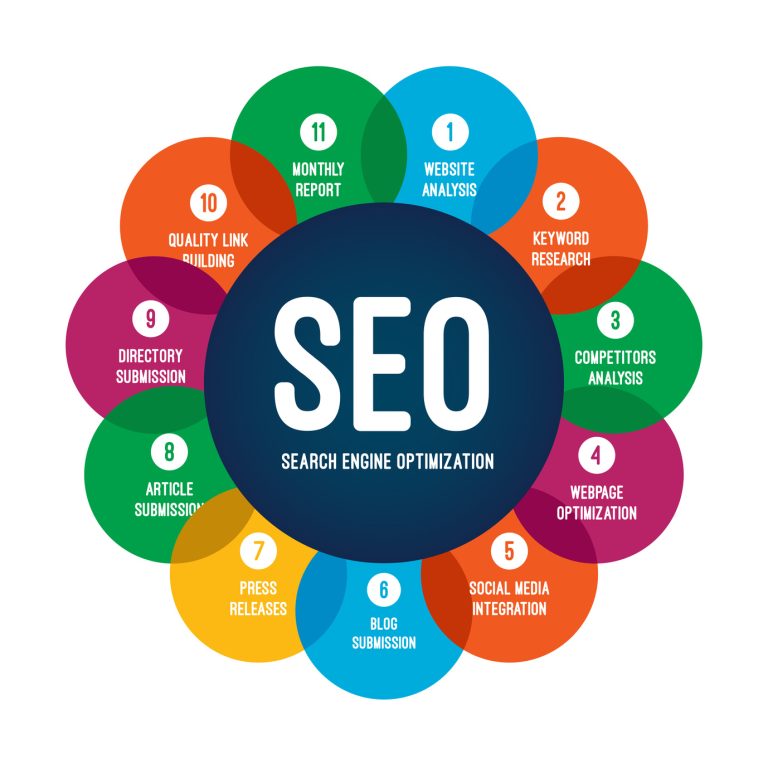
In the ever-evolving world of digital marketing and web design, one technique has proven to be a game-changer: A/B testing. This method, also known as split testing, allows businesses to compare two versions of a webpage, ad, or email to determine which one performs better. By analyzing user behavior and engagement metrics, companies can make data-driven decisions that lead to improved conversions, better user experiences, and more effective marketing strategies.
A/B testing is not just about guessing what works; it’s about using real-world data to validate hypotheses and optimize performance. Whether you’re looking to boost your website’s conversion rate, enhance user engagement, or refine your marketing campaigns, A/B testing provides a structured approach to experimentation that ensures every change is backed by evidence.
This article will guide you through the fundamentals of A/B testing, its importance in modern SEO, how to implement it effectively, and the tools that can help you succeed. Whether you’re a seasoned marketer or just starting out, understanding A/B testing is essential for staying competitive in today’s digital landscape.
What Is A/B Testing and Why It Matters
At its core, A/B testing is a method of comparing two variations of a webpage, email, or other digital asset to determine which one performs better. The process involves creating a control version (A) and a variation (B), then randomly splitting traffic between the two to measure key performance indicators such as click-through rates, conversion rates, and engagement metrics.
The primary goal of A/B testing is to identify which version of a page or element leads to better outcomes. For example, a business might test two different headlines on a landing page to see which one drives more sign-ups. By isolating a single variable, marketers can accurately measure the impact of changes and make informed decisions.
Why A/B Testing Matters in 2025
As search engines and user expectations evolve, A/B testing has become an essential tool for optimizing both user experience and search engine visibility. Here are a few reasons why A/B testing is critical in today’s digital landscape:
- Data-Driven Decisions: Instead of relying on intuition, A/B testing allows businesses to base their decisions on real user behavior.
- Improved Conversion Rates: By testing different elements like call-to-action buttons, layouts, and copy, companies can significantly increase their conversion rates.
- Enhanced User Experience: A/B testing helps identify which design elements and content resonate most with users, leading to a more engaging and intuitive experience.
- Cost-Effective Optimization: Rather than making broad, expensive changes, A/B testing enables businesses to test small, low-risk modifications that can yield high returns.
In an era where user attention is fleeting and competition is fierce, A/B testing provides a powerful way to stay ahead of the curve.
How A/B Testing Impacts SEO Performance
While A/B testing is often associated with conversion rate optimization (CRO), its impact on SEO performance is equally significant. Search engines prioritize websites that provide a seamless user experience, and A/B testing can help improve several factors that influence search rankings.
1. User Engagement Metrics
Search engines like Google use user engagement metrics such as dwell time, bounce rate, and click-through rate (CTR) to assess the quality of a website. A/B testing allows businesses to experiment with different elements—such as headlines, layout, and content structure—to improve these metrics. A well-designed page that keeps users engaged is more likely to rank higher in search results.
2. Page Load Speed
One of the key factors in SEO is page load speed. A/B testing can help identify which design or content changes affect loading times. For instance, testing different image formats or code optimizations can lead to faster load speeds, which is crucial for both user experience and search rankings.
3. Content Quality and Relevance
A/B testing can also be used to evaluate the effectiveness of content strategies. By testing different headlines, subheadings, and body copy, businesses can determine which content resonates most with their audience. High-quality, relevant content is a strong signal for search engines, helping to improve rankings.
4. Mobile Optimization
With over 60% of web traffic coming from mobile devices, mobile optimization is a critical component of SEO. A/B testing can help identify which mobile-friendly designs and layouts perform best, ensuring that your site is optimized for all users.
5. Search Intent Alignment
Understanding search intent is essential for creating content that meets user needs. A/B testing can help determine whether your content aligns with what users are searching for. For example, if a test shows that users are more likely to convert after reading a specific type of content, you can adjust your strategy accordingly.
By leveraging A/B testing, businesses can create a more optimized, user-centric website that not only improves engagement but also boosts search engine visibility.
Step-by-Step Implementation Framework
Implementing A/B testing requires a structured approach to ensure accurate results and meaningful insights. Here’s a step-by-step framework to help you get started:
1. Define or Audit the Current Situation
Before launching any A/B test, it’s essential to understand the current state of your website or marketing campaign. Use analytics tools like Google Analytics or Hotjar to gather data on user behavior, conversion rates, and pain points. Identify areas that need improvement, such as high bounce rates, low engagement, or poor conversion rates.
2. Apply Tools, Methods, or Tactics
Choose the right A/B testing tools based on your needs. Popular options include Optimizely, VWO, and Omniconvert. These platforms allow you to create variations, track user interactions, and analyze results. Additionally, consider using heatmaps and session recordings to gain deeper insights into user behavior.
3. Measure, Analyze, and Optimize
Once your test is live, monitor key performance indicators (KPIs) such as conversion rate, bounce rate, and time on page. Use statistical analysis to determine if the differences between the control and variation are statistically significant. Based on the results, make data-driven decisions to optimize your website or campaign.
Practical Examples
- Testing Call-to-Action Buttons: Experiment with different button colors, sizes, and placements to see which one drives more clicks.
- Testing Headlines: Compare different headlines to determine which one generates higher engagement and lower bounce rates.
- Testing Layouts: Test different page layouts to see which one leads to better user navigation and higher conversions.
By following this framework, you can systematically improve your website’s performance and achieve measurable results.
Real or Hypothetical Case Study
Let’s look at a hypothetical case study to illustrate the power of A/B testing in action.
Case Study: E-commerce Website Optimization
An e-commerce company noticed that their checkout process had a high abandonment rate. To address this, they conducted an A/B test on their checkout page. They created two versions:
- Version A: The original checkout page with multiple form fields and a single CTA button.
- Version B: A simplified checkout page with fewer form fields and a prominent CTA button.
After running the test for two weeks, they found that Version B had a 35% lower abandonment rate and a 20% higher conversion rate compared to Version A. Based on these results, they implemented the simplified checkout page across their site, leading to a significant increase in sales.
This case study highlights how A/B testing can uncover hidden issues and lead to tangible improvements in user experience and business performance.
Tools and Techniques for A/B Testing
To conduct effective A/B tests, it’s essential to use the right tools and techniques. Here are some of the most popular A/B testing tools:
- Optimizely: A powerful platform that allows for advanced A/B testing and personalization.
- VWO (Visual Website Optimizer): Offers a user-friendly interface for creating and managing A/B tests.
- Omniconvert: Known for its ease of use and integration with various analytics tools.
- Google Optimize: A free tool that integrates seamlessly with Google Analytics.
- Hotjar: Provides heatmaps and session recordings to gain insights into user behavior.
- Convert.com: Offers a range of A/B testing features, including multivariate testing.
These tools can help you streamline the testing process, track user interactions, and analyze results to make informed decisions.
Future Trends and AI Implications
As technology continues to advance, the role of artificial intelligence (AI) in A/B testing is becoming increasingly significant. AI-powered tools can automate the testing process, analyze vast amounts of data, and predict which variations are most likely to succeed.
Key Trends to Watch
- Predictive Analytics: AI can forecast which variations will perform best based on historical data and user behavior.
- Personalization: AI can tailor A/B tests to individual users, creating more personalized experiences that drive higher conversions.
- Automated Testing: AI can run multiple tests simultaneously, reducing the time and resources required for manual testing.
As AI becomes more integrated into A/B testing, businesses will have even more opportunities to optimize their websites and marketing campaigns. Staying ahead of these trends will be crucial for maintaining a competitive edge in the digital space.
Key Takeaways
- A/B testing is a powerful technique for comparing variations of a webpage, ad, or email to determine which performs better.
- It allows businesses to make data-driven decisions that lead to improved conversions, user engagement, and SEO performance.
- A/B testing is essential for modern SEO, as it helps optimize user experience, page load speed, and content relevance.
- Implementing A/B testing requires a structured approach, including defining objectives, selecting the right tools, and analyzing results.
- Real-world examples demonstrate how A/B testing can lead to significant improvements in business performance.
- AI and automation are shaping the future of A/B testing, offering new opportunities for personalization and predictive insights.
By embracing A/B testing, businesses can unlock valuable insights, enhance user experiences, and achieve long-term success in the digital landscape.
Meta Title: What Is A/B Testing? How It Compares Variations to Improve Performance
Meta Description: Learn how A/B testing compares variations to improve website performance, conversions, and SEO. Discover the benefits, implementation steps, and tools to optimize your digital strategy.
SEO Tags (5): A/B Testing, Conversion Rate Optimization, SEO Performance, User Experience, Digital Marketing
Internal Link Suggestions: [Parameter #1: Search Intent Alignment], [Parameter #7: Semantic Keyword Mapping], [Parameter #10: Updated Data & References]
External Source Suggestions: https://www.optimizely.com/, https://vwo.com/, https://www.hotjar.com/








